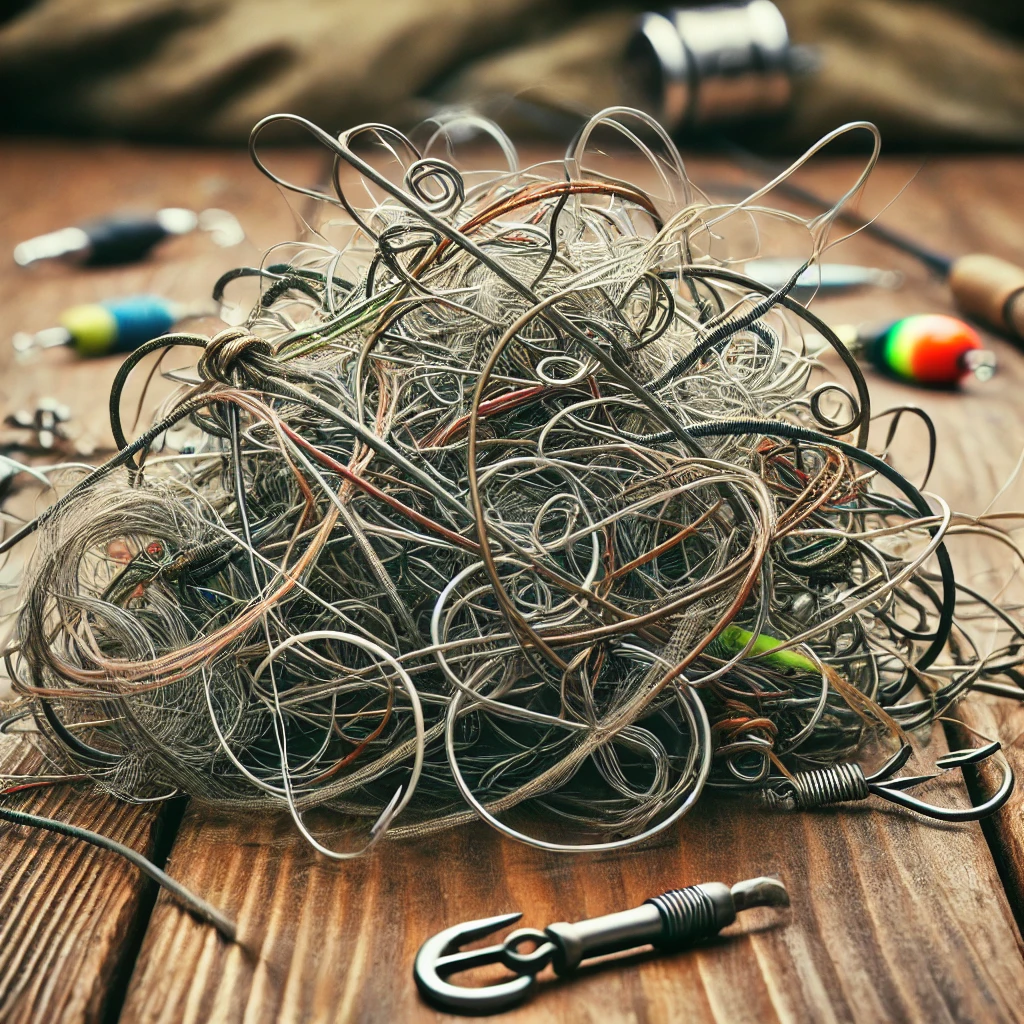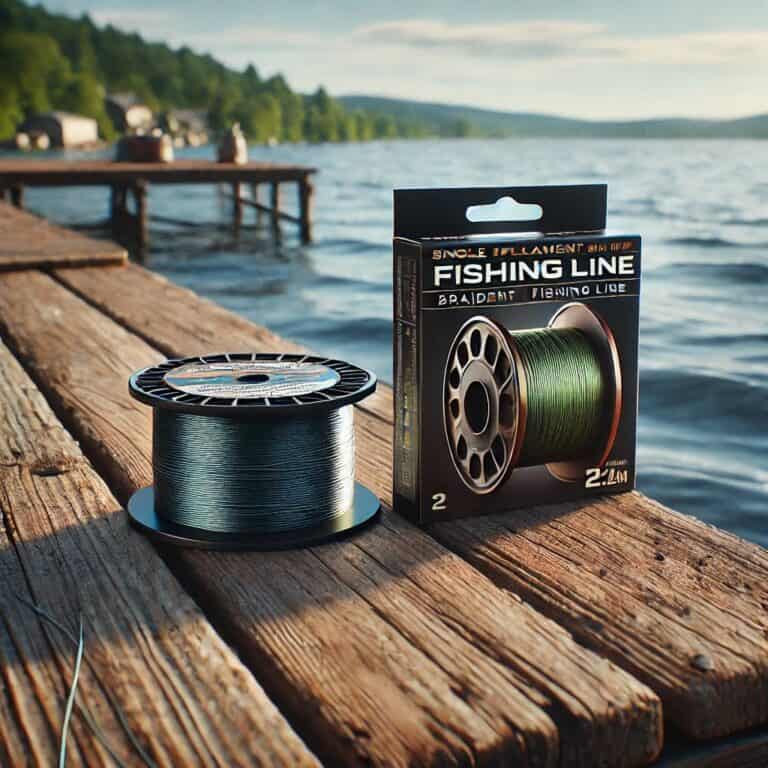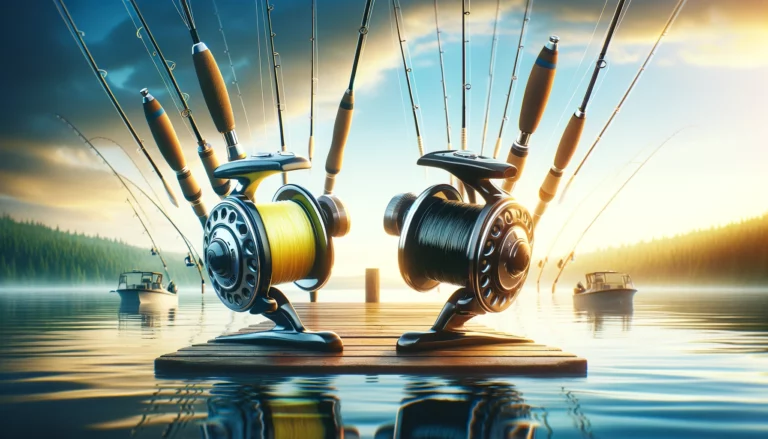Fishing Line: How Often Should You Replace It?
Fishing line is a critical component of any angler’s gear, acting as the vital link between you and your catch.
However, like any other piece of equipment, fishing line has a lifespan and needs to be replaced periodically to ensure optimal performance.

The frequency with which you should replace your fishing line depends on several factors, including the type of line, how often you fish, and the conditions you encounter.
In this article, we’ll explore the signs that indicate it’s time to change your line, the differences between braided and monofilament lines, a little bit about fluorocarbon, and provide approximate timelines for replacing each type.
Fishing Line Types
Before diving into replacement timelines, it’s essential to understand the two most common types of fishing line: braided and monofilament.
Braided Line: Braided fishing line is made from multiple strands of synthetic fibers, such as Spectra or Dyneema, woven together.
This type of line is known for its high strength-to-diameter ratio, making it incredibly strong for its size.
Braided line has low stretch, excellent sensitivity, and is highly resistant to abrasion.
However, it can be more visible in the water compared to other types of lines.
Monofilament Line: Monofilament, or mono, is a single-strand fishing line made from nylon or other similar polymers.
It is versatile, relatively inexpensive, and available in various strengths and colors.
Monofilament has more stretch than braided line, providing shock absorption, and is less visible in the water.
However, it is more prone to UV damage, abrasion, and water absorption, which can weaken it over time.
Factors Affecting Fishing Line Longevity
The lifespan of your fishing line depends on several factors, including:
- Frequency of Use: The more often you fish, the more wear and tear your line will experience. Regularly used lines will need to be replaced more frequently than those used occasionally.
- Exposure to Elements: UV rays, saltwater, and extreme temperatures can degrade fishing line over time. Monofilament is particularly susceptible to UV damage, while both mono and braided lines can be weakened by saltwater exposure.
- Fishing Conditions: Fishing in rough or rocky areas can cause abrasion and damage to your line. Additionally, fighting large or aggressive fish can strain the line, potentially leading to weakening or breakage.
- Storage: Proper storage of fishing line can extend its lifespan. Lines stored in cool, dark places are less likely to degrade quickly compared to those exposed to heat and sunlight.
When to Replace Braided Fishing Line
Braided fishing line is known for its durability and long lifespan. However, it is not immune to wear and tear. Here are some guidelines for when to replace braided line:
Approximate Timeline: Braided line can last anywhere from two to five years, depending on usage and conditions.
Anglers who fish frequently or in harsh environments may need to replace it more often.
Signs It’s Time to Replace:
- Fraying or Abrasion: Check the line for signs of fraying or abrasion, particularly near the knots and the first few feet from the lure or hook. This wear can weaken the line and lead to breakage.
- Loss of Color: Over time, braided lines may lose their color due to exposure to the elements. While color fading doesn’t necessarily weaken the line, it can indicate that the line has been heavily used and may need replacement.
- Reduced Performance: If you notice a decrease in sensitivity or difficulty in casting, it may be time to replace the line. Braided line can become stiff or develop memory, affecting its performance.
Tips for Extending the Life of Braided Line:
- Rinse After Use: If you’re fishing in saltwater, rinse the line with fresh water after each use to remove salt and debris.
- Check for Damage Regularly: Inspect your line before each outing and after catching a fish to identify any damage.
- Store Properly: Keep your reels and line in a cool, dry place away from direct sunlight.

When to Replace Monofilament Fishing Line
Monofilament line has a shorter lifespan than braided line due to its susceptibility to UV damage and water absorption.
Here’s what you need to know about replacing mono:
Approximate Timeline: Monofilament line typically needs to be replaced every six months to a year. However, if you fish frequently or in harsh conditions, consider replacing it more often.
Signs It’s Time to Replace:
- Discoloration: Monofilament lines can become discolored over time, turning from clear to a milky white or yellowish hue. This discoloration indicates UV damage and weakening.
- Brittleness: Mono lines can become brittle with age, making them more prone to breaking. Test the line’s strength by pulling on it; if it snaps easily, it’s time for a replacement.
- Kinks or Coiling: Monofilament can develop kinks or memory, causing it to coil up. This can affect casting distance and accuracy, as well as reduce the line’s strength.
- Visible Nicks or Cuts: Inspect the line for any nicks, cuts, or abrasions, especially near the hook or lure. These imperfections can significantly weaken the line.
Tips for Extending the Life of Monofilament Line:
- Avoid Prolonged Sun Exposure: Store your line in a dark place when not in use to protect it from UV rays.
- Rinse After Use: Rinse mono lines with fresh water after saltwater fishing to prevent salt buildup.
- Regularly Inspect and Replace: Regularly check your line for damage and replace it as needed, even if it hasn’t reached the typical lifespan.
Additional Considerations for Fluorocarbon Line
While braided and monofilament lines are the most common, fluorocarbon lines are also popular among anglers.
Fluorocarbon is known for its low visibility underwater, making it an excellent choice for clear water and wary fish.
It is more resistant to UV damage and water absorption than monofilament but can still suffer from wear and tear.
Approximate Timeline: Fluorocarbon line can last up to two years, but frequent use or harsh conditions may shorten its lifespan.
Signs It’s Time to Replace:
- Cracks or Fraying: Check for cracks, fraying, or abrasions, particularly near the knots and the first few feet of the line.
- Reduced Performance: If the line becomes stiff, difficult to manage, or shows signs of memory, it may be time to replace it.
Tips for Extending the Life of Fluorocarbon Line:
- Store Properly: Keep fluorocarbon lines in a cool, dark place to protect them from heat and UV rays.
- Inspect Regularly: As with other lines, regularly inspect for damage and replace as needed.
General Tips for Maintaining Fishing Line
Regardless of the type of fishing line you use, proper maintenance and care can extend its lifespan and ensure optimal performance.
Here are some general tips:
- Inspect Before Use: Always check your line before heading out to fish. Look for any signs of damage, such as fraying, nicks, or discoloration.
- Reel Maintenance: Keep your reel clean and well-lubricated. Dirt, salt, and grime can accumulate on the line and reel, causing wear and reducing performance.
- Proper Storage: Store your fishing line in a cool, dark place, away from direct sunlight and extreme temperatures. Avoid storing your rods and reels in hot cars or garages.
- Use Line Conditioners: Consider using a line conditioner to reduce friction and memory in your fishing line. This can improve casting distance and line management.
- Practice Good Knots: Tying strong, secure knots is essential for preventing line breakage. Make sure to wet the line before tightening knots to reduce friction and avoid weakening the line.
Conclusion: The Importance of Timely Line Replacement
Replacing your fishing line regularly is crucial for maintaining optimal performance and ensuring a successful day (or night) of fishing.
Whether you use braided, monofilament, or fluorocarbon line, paying attention to the signs of wear and tear and following recommended replacement timelines can help you avoid lost catches and equipment failure.
Remember that the frequency of replacement depends on several factors, including the type of line, frequency of use, and environmental conditions.
By being proactive in maintaining your fishing line, you can enjoy more successful fishing trips.
Before you start gearing up for that day on the water, take a moment to inspect your line and consider if it’s time for a replacement.
Your future self—and catches—will thank you.
Tight lines!




